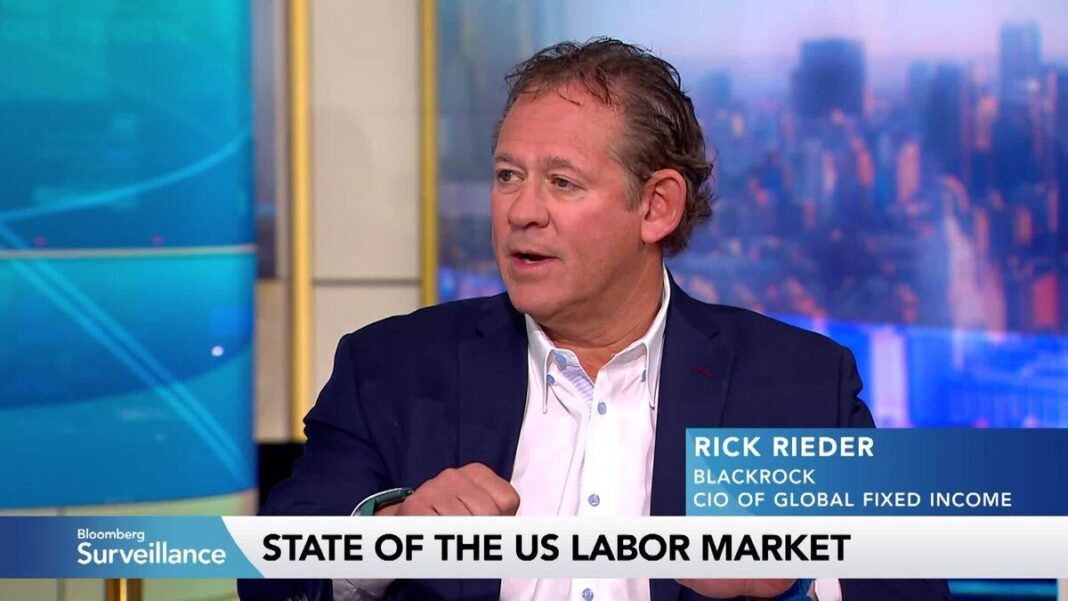The State of the U.S. Economy: Insights from Rick Rieder
In a recent discussion, Rick Rieder, the Chief Investment Officer of Global Fixed Income at BlackRock, offered a nuanced perspective on the current state of the U.S. economy. He characterized it as “fine” but noted that it is “operating on a couple of cylinders.” This metaphor underscores a sentiment many economists share: while there are positive signs, the economy isn’t firing on all fronts. Let’s delve into the key aspects of Rieder’s insights.
Labor Market Dynamics
One of Rieder’s primary focuses is on the labor market. Employment data has shown resilience, with job growth in several sectors. Nevertheless, the underlying quality of these jobs and wages remains a concern. While unemployment rates are low, Rieder suggests that a deeper examination of workforce participation rates and wage growth reveals a more complex reality. Many sectors are still struggling to find qualified workers, reflecting a mismatch between skills required and those available. This mismatch is particularly glaring in industries that are increasingly reliant on technological advancements.
The Role of AI in Productivity
A pivotal theme in Rieder’s discussion is the burgeoning influence of artificial intelligence on productivity. He posits that AI could be the catalyst for a productivity revolution, transitioning the economy toward a more efficient structure. As businesses increasingly adopt AI technologies, they have the potential to streamline operations, reduce costs, and drive innovation. This transformation could lead to higher economic output and improved living standards if harnessed correctly. However, Rieder cautions that the benefits of AI may not be uniformly distributed, with some industries and workers potentially left behind.
Varied Economic Signals
While Rieder paints a picture of resilience, he also acknowledges that various economic indicators present mixed signals. Inflation continues to be a concern, creating an uncertain environment for both consumers and investors. The Federal Reserve’s policies are in a constant state of flux, attempting to balance the need for economic growth while keeping inflation in check. This delicate juggling act impacts borrowing costs and investment decisions across all sectors.
Sectoral Disparities
Rieder points out that while some sectors are thriving, others face significant challenges. For instance, the technology sector has seen remarkable growth, bolstered by digital transformation and AI advancements. In contrast, traditional sectors like manufacturing may lag, grappling with globalization and shifts in consumer preferences. Such disparities can lead to uneven economic growth, further complicating the broader economic landscape.
Consumer Sentiment and Spending
Another key element of Rieder’s analysis is consumer sentiment. Despite economic headwinds, consumer spending remains robust, which is a critical driver of economic activity. However, rising interest rates and inflationary pressures are beginning to weigh on consumer confidence. How consumers respond to these pressures will be crucial for sustaining economic momentum. Rieder emphasizes that the psychological aspect of spending can greatly influence various sectors, particularly retail and services.
The Future of Investment Strategies
Given the complex economic environment, Rieder suggests that investors need to adopt a flexible and adaptive approach. As the landscape evolves, investment strategies must reflect both the opportunities and risks presented by emerging technologies like AI and the volatile nature of the labor market. Diversification and a keen eye on sectoral shifts will be vital in navigating the uncertain waters ahead.
The Global Context
Finally, Rieder highlights the importance of considering the global economic landscape. The U.S. economy does not exist in a vacuum, and its health is intertwined with global economic trends. Factors such as geopolitical tensions, international trade policies, and the economic performance of key partners can all have substantial impacts. Hence, a holistic view that incorporates both domestic and international elements will be essential for understanding and predicting economic trajectories.
Conclusion
Rick Rieder’s insights on the U.S. economy provide a multi-faceted understanding of current challenges and opportunities. His perspective encourages a thorough examination of the various elements at play, from labor markets to technological advancements. In this rapidly changing environment, staying informed and adaptable is more crucial than ever for both investors and policymakers.



